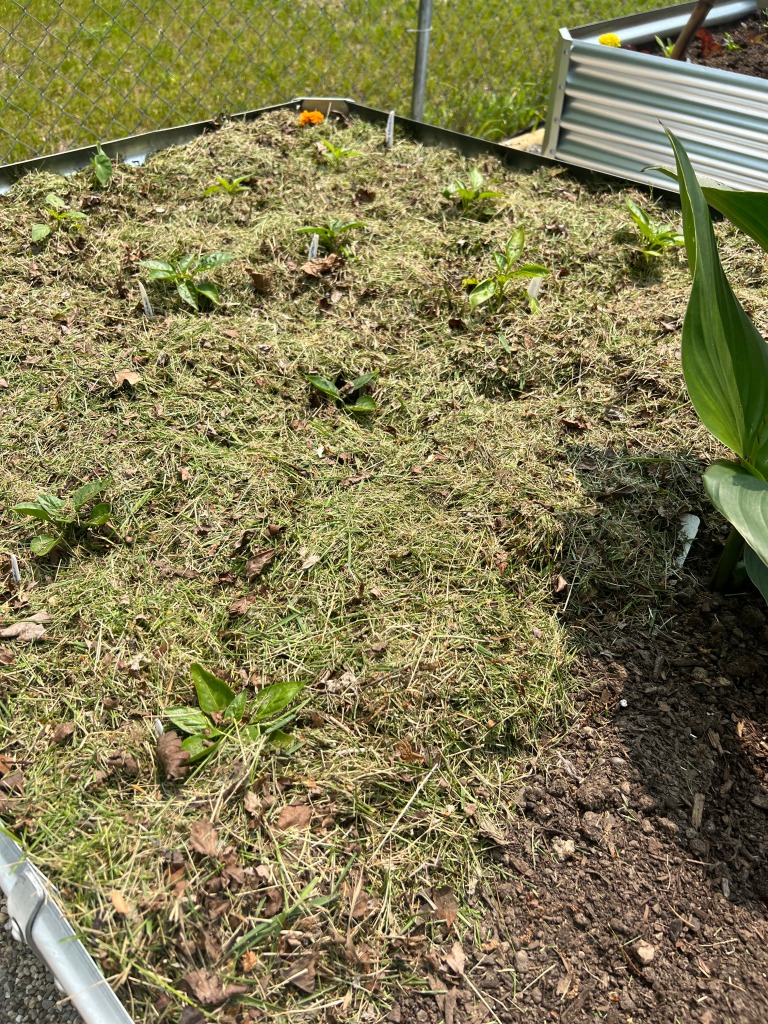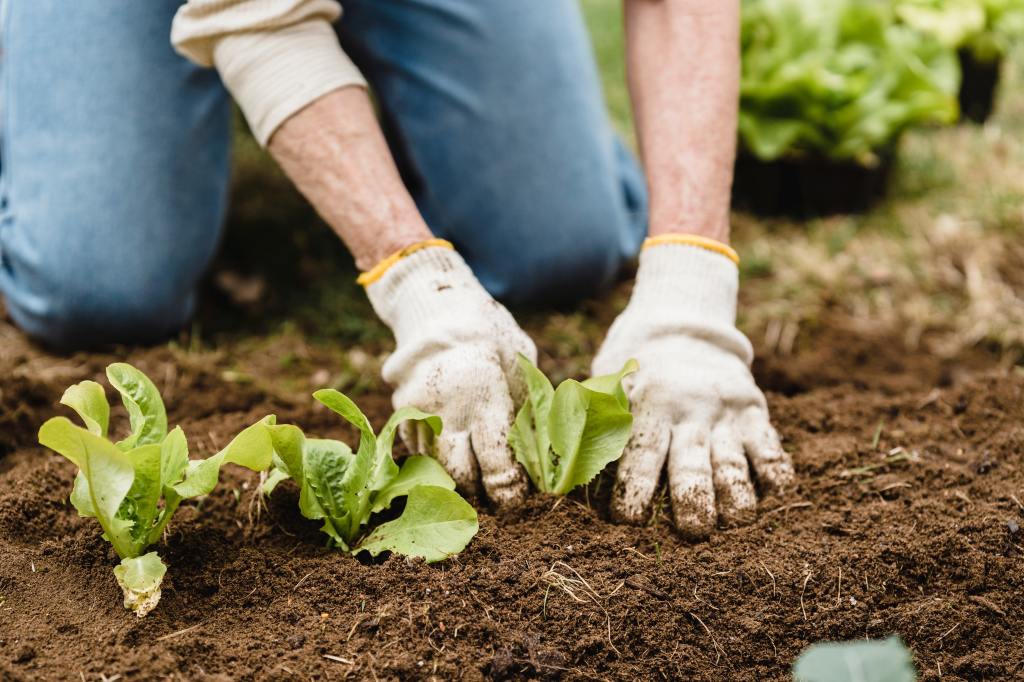
Introduction to Sustainability in Gardening
Gardening is not just about creating beautiful landscapes or growing your own food; it can also be a powerful tool for promoting sustainability and protecting the environment. By adopting sustainable gardening practices, we can minimize our ecological footprint and create a harmonious balance between nature and human activity.
What exactly is sustainable gardening you ask, especially is you are new to playing in the dirt. You may be interested in gardening, but where do you begin?
Sustainable gardening involves techniques that reduce the use of synthetic chemicals, conserve water, and promote biodiversity. It aims to create a self-sustaining ecosystem where plants, animals, and microorganisms thrive together. By implementing sustainable gardening practices, we not only contribute to the health of the planet but also enjoy a more fulfilling and rewarding gardening experience.

Benefits of Sustainable Gardening Practices
Embracing sustainable gardening practices offers a wide range of benefits, both for the environment and for ourselves. Firstly, it helps conserve water, a precious resource that is becoming increasingly scarce. By using techniques such as mulching and drip irrigation, we can reduce water usage and minimize wastage.
Secondly, sustainable gardening practices promote soil health. By avoiding the use of synthetic fertilizers and pesticides, we allow beneficial microorganisms to thrive, improving soil structure and fertility. Healthy soil retains moisture better, reduces erosion, and supports the growth of vibrant, nutrient-rich plants.
Furthermore, sustainable gardening practices contribute to the preservation of biodiversity. By planting native species and creating habitats for beneficial insects and pollinators, we encourage a diverse range of plants and animals to coexist in our gardens. This, in turn, helps maintain a balanced ecosystem and safeguards the long-term health of our environment.
The Role of Organic Gardening in Sustainability
Organic gardening is an integral part of sustainable gardening. It emphasizes the use of natural, organic materials and techniques to promote plant growth and control pests. By avoiding synthetic chemicals, organic gardening minimizes the negative impact on the environment and supports the overall health of our ecosystems.
One of the key principles of organic gardening is soil building. Instead of relying on synthetic fertilizers, organic gardeners focus on enriching the soil with compost, organic matter, and natural amendments. This approach not only improves soil fertility but also helps sequester carbon and reduce greenhouse gas emissions.

Organic gardening also prioritizes natural pest control methods. By attracting beneficial insects, such as ladybugs and lacewings, and using companion planting techniques, we can reduce the need for chemical pesticides. This not only protects the environment but also creates a balanced ecosystem where pests are naturally controlled.
Choosing Eco-Friendly Gardening Materials and Tools
When it comes to sustainable gardening, the choice of materials and tools is crucial. Opting for eco-friendly options can significantly reduce our impact on the environment and promote a more sustainable approach to gardening.
For example, instead of using plastic pots, consider using biodegradable alternatives made from materials like coconut coir or peat. These pots will eventually break down in the soil, reducing waste and minimizing pollution.

Similarly, choose hand tools made from sustainable materials, such as bamboo or recycled steel. Avoid tools with plastic handles or non-recyclable components. By making conscious choices about the materials we use, we can contribute to a more sustainable gardening industry.
Water Conservation in Gardening
Water scarcity is a pressing issue in many parts of the world. By implementing water conservation techniques in our gardens, we can make a significant difference in reducing water usage and preserving this valuable resource.
One effective method is mulching. By applying a layer of organic mulch, such as wood chips or straw, around plants, we can help retain moisture in the soil. Mulch also acts as a barrier, reducing evaporation and weed growth.

Another water-saving technique is drip irrigation. This method delivers water directly to the root zone of plants, minimizing wastage through evaporation and runoff. Drip irrigation systems can be easily installed and adjusted to meet the specific needs of different plants, ensuring efficient water usage.
Collecting rainwater is another effective way to conserve water in the garden. Install rain barrels or other water collection systems to capture and store rainwater for later use. This free and natural source of water can be used to irrigate plants during dry periods, reducing reliance on municipal water supplies.

Join the list
Join hundreds of our subscribers and be the first to know about new content and special offers.
Composting: The Key to Sustainable Gardening
Composting is a fundamental practice in sustainable gardening. It involves the decomposition of organic materials, such as kitchen scraps and garden waste, to create nutrient-rich compost. By composting, we not only reduce the amount of waste that goes to landfills but also produce a valuable resource for our gardens.
Compost improves soil fertility, enhances water retention, and provides essential nutrients to plants. It also helps suppress diseases and pests, reducing the need for synthetic chemicals. By implementing composting practices in our gardens, we are closing the nutrient loop and creating a more sustainable and self-sufficient system.

To start composting, designate an area in your garden for a compost pile or use a compost bin. Add a mix of green materials (such as fruit and vegetable scraps) and brown materials (such as leaves and twigs) in the right proportions. Regularly turn the compost pile to promote decomposition and ensure proper aeration. With time, you will have rich, dark compost ready to nourish your plants.
Attracting Beneficial Insects and Pollinators
Beneficial insects and pollinators play a vital role in sustainable gardening. They help control pests, enhance plant reproduction, and contribute to the overall health and diversity of our gardens. By creating a welcoming habitat for these beneficial creatures, we can reduce the need for chemical pesticides while promoting a thriving ecosystem.
To attract beneficial insects, incorporate a variety of flowering plants in your garden. Choose plants that provide nectar and pollen sources throughout the growing season. Native wildflowers, herbs, and perennial plants are particularly attractive to beneficial insects and pollinators.

Create habitats such as insect hotels, bee houses, or butterfly puddling areas to provide shelter, nesting sites, and food sources. Avoid using chemical pesticides, as they can harm beneficial insects. Instead, rely on natural pest control methods, such as companion planting and biological controls, to maintain a balance between pests and predators.
Native Plants and Biodiversity in Sustainable Gardening
Native plants are an essential component of sustainable gardening. They are adapted to local climates, require fewer resources, and provide food and shelter for native wildlife. By incorporating native plants into our gardens, we can promote biodiversity and create a more resilient and sustainable ecosystem.

Native plants have evolved alongside local wildlife and provide the necessary resources for their survival. They attract a diverse range of insects, birds, and other animals, contributing to a healthy and balanced garden ecosystem. Additionally, native plants are often more resistant to pests and diseases, reducing the need for chemical interventions.
When selecting native plants, consider their specific requirements, such as sun exposure and soil type. Choose a mix of species that bloom at different times of the year to provide a continuous source of food for pollinators. By creating a garden with a variety of native plants, you will not only support biodiversity but also enjoy a beautiful and thriving landscape.
Creating a Sustainable Garden Design
Designing a sustainable garden involves careful planning and consideration of environmental factors. By incorporating sustainable design principles, we can create a garden that is not only visually appealing but also ecologically sound.
Start by observing the natural features of your site, such as sunlight, soil type, and water drainage. Use this information to select plants that are well-suited to your garden’s conditions, reducing the need for excessive watering or soil amendments.

Consider creating different zones within your garden to cater to different plant requirements. Group plants with similar water needs together, allowing for more efficient irrigation. Integrate edible plants with ornamental ones to maximize the productivity of your garden.
Incorporate elements such as rain gardens or bioswales to manage stormwater runoff and promote water infiltration. These features can help reduce erosion, filter pollutants, and recharge groundwater.
Finally, aim for a low-maintenance garden design that minimizes the need for excessive pruning, mowing, and watering. By choosing plants with low water requirements and native species adapted to your region, you can create a garden that thrives with minimal intervention.
Tips for Maintaining an Eco-Friendly Garden
Maintaining an eco-friendly garden requires ongoing care and attention. Here are some tips to help you keep your garden sustainable and thriving:
- Practice proper plant care: Water plants deeply and infrequently to encourage deep root growth. Mulch around plants to conserve moisture and suppress weeds. Prune trees and shrubs to maintain their health and shape, but avoid excessive pruning that can stress the plants.
- Use organic pest control methods: If pests become a problem, opt for organic solutions such as insecticidal soaps, neem oil, or homemade remedies like garlic or chili pepper sprays. Encourage natural predators, such as birds and beneficial insects, to control pest populations.
- Limit chemical inputs: Avoid the use of synthetic fertilizers and pesticides that can harm the environment and disrupt the balance of your garden ecosystem. Instead, focus on building healthy soil through composting and organic amendments.
- Conserve water: Regularly check for leaks in irrigation systems and repair them promptly. Water plants during the early morning or late evening to minimize evaporation. Collect rainwater and use it for irrigation whenever possible.
- Encourage biodiversity: Plant a variety of native species to attract beneficial insects, birds, and other wildlife. Create habitats such as birdhouses, bat boxes, or ponds to provide shelter and food sources.
- Practice responsible waste management: Recycle garden waste by composting or using it as mulch. Dispose of hazardous materials, such as old pesticides or herbicides, according to local regulations.
By following these tips, you can maintain an eco-friendly garden that not only enhances the beauty of your surroundings but also contributes to a sustainable future.
Conclusion:
Cultivating an Eco-Friendly Paradise
In conclusion, sustainable gardening is a powerful tool for promoting environmental stewardship and creating a more eco-friendly world. By embracing sustainable gardening practices, such as organic gardening, water conservation, composting, and biodiversity conservation, we can cultivate our own little paradise while minimizing our impact on the planet.
Through careful plant selection, responsible use of resources, and conscious gardening techniques, we can create a garden that supports the health of the ecosystem, conserves water, and attracts beneficial insects and pollinators. By adopting sustainable gardening practices, we are not only benefiting ourselves but also contributing to a more sustainable and resilient future.
So, let’s embark on this journey of cultivating an eco-friendly paradise in our own gardens. Start small, make conscious choices, and watch as your garden becomes a haven for both nature and yourself. Together, we can make a difference and create a sustainable legacy for generations to come.
CTA: Join the sustainable gardening movement today! Start implementing these eco-friendly practices in your own garden and make a positive impact on the environment. Together, we can cultivate a greener and more sustainable future.
If you enjoyed this blog , please LIKE, Follow, Share & leave me a comment! I love your feedback!
If you aren’t following me on Facebook & Instagram, go on over & give a LIKE & Follow me for daily tips & tricks for your home & garden!
Remember to eat fresh, shop local, & have a happy day,
Jean
Copyright Policy
All text and images on this site are copyright of For Dragonflies And Me. Unless otherwise noted, you may not use this content
This post may contain affiliate links. If you choose to purchase through an affiliate link, I may receive a small commission at no additional cost to you. You can see my full disclaimer here.


